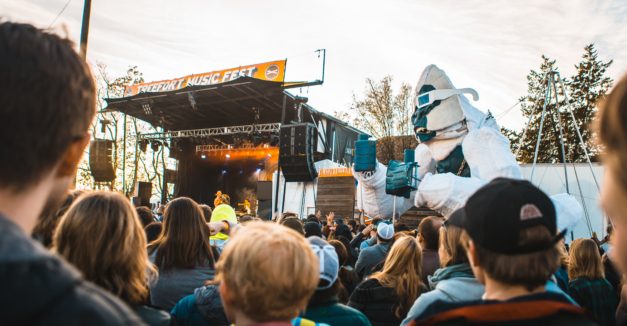In the epicenter of Treefort Music Festival, past rows of food trucks and vendors on Boise’s 13th Street, the beer tent and merch booth, Lizzo had set the faux-tree-lined main stage ablaze. The Detroit-native rapper, alongside DJ Sophia and dancers Courtney and Grace, delivered an emphatic message of positivity and self-affirmation with seemingly boundless energy. Before launching into the head-bobbing hit song “Good As Hell,” Lizzo pumped her fists into the air, addressing the hypothetical person blowing up her phone.
To a roar from one of the biggest crowds all weekend, she shouted, “No I’m not gonna fuck with you while I’m at Treefort Festival, having the time of my life!”
The point — be present in the moment, feel fantastic about it — wasn’t lost on me, but I couldn’t help realizing I had lost nearly all contact with the outside world. In the midst of a five-day, downtown-wide music festival featuring 400-plus hundreds of artists, more than 20 venues and some of the best in regional craft brewing, industry, tech and filmmaking (deep breath) who could have time for anything else?

Lizzo & crew on the Treefort Mainstage
So when Hear Nebraska traveled to Treefort’s sixth-annual event this past weekend, the goal was to see music, yes, but also to experience as much of the city as possible. It would be a tall task, considering that outside of music, the festival boasts 10 subcategories of things to do — “forts,” they call them, as in Comedyfort, Skatefort, Alefort, Filmfort — that spread into an extremely-walkable downtown area from the mainstage.
Our reasons for traveling to Boise were twofold. It’s the kind of trip HN takes every year, in order to experience how festivals work in different states and offer comparison to our audience. Each year since HN’s existence, we’ve headed south to Austin, Texas for SXSW and, after hearing the Treefort buzz, decided to go a different route. And since the nonprofit now produces Lincoln Calling, our team also went for inspiration, to pick its brain through soaking it all in, so to speak.
What we found was an experience not so far from what is possible here in Nebraska. Immediately below, watch our video recap. Then, read on to hear how Treefort showcases the city’s existing infrastructure, why that is vital and, of course, the view from the audience.
* * *
The City of Trees lies right along the Boise River near Idaho’s southwestern corner, just west of the Sawtooth Mountain Range and north of Snake River National Park. Boise is by far and away the largest city in Idaho, with a 2013 population of 214,237. It is also one of the largest metropolitan areas in the Pacific Northwest behind Seattle and Portland and just ahead of Spokane.
We observed aloud more than a few times that Boise felt like some combination of Lincoln and Omaha. Like the former, it’s at once a capitol city and college town, with the state capitol just a few steps from festival venues and Boise State University across the river just south of downtown. And while it’s much smaller than Omaha, its artistic scene and vibrant nightlife are comparably robust.
The context makes Treefort all the more vital, in-state, to contemporary arts and culture. The festival launched in 2011 and since then has assumed a responsibility to represent those communities well, especially with significantly larger cities in the same region. Not only is that true within the music community, but arts, local beer and food and business/entrepreneurship, as evidenced by its various “forts.”
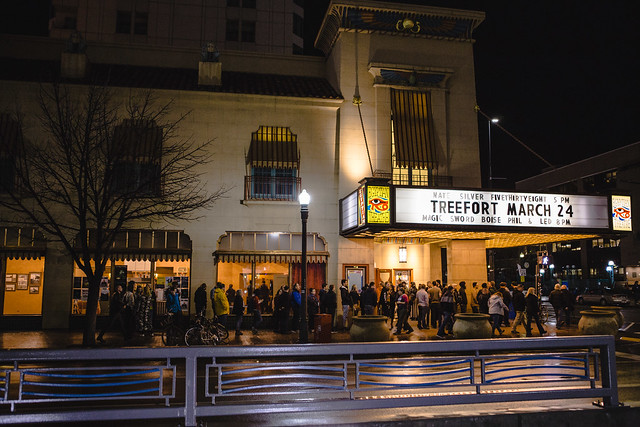
A line forms Friday outside Boise’s Egyptian Theater
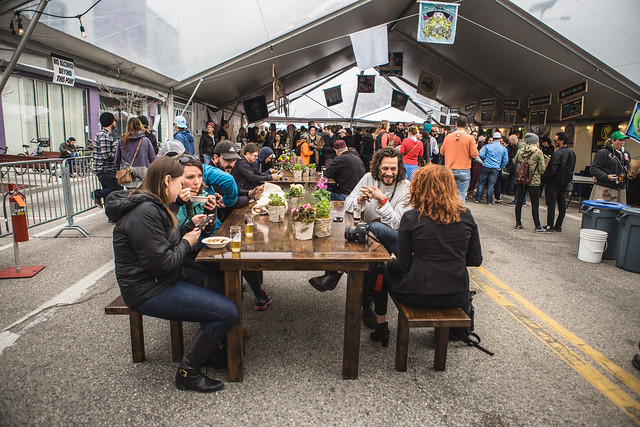
A group of patrons sample craft beer and local cuisine at “alefort”
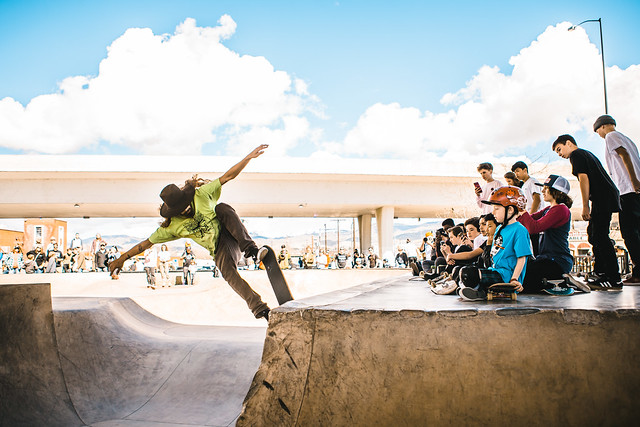
Young skateboarders watch pro Cody Lockwood at “skatefort,” inside Rhoades Skate Park
Nebraska struggles with “brain drain” and how to keep intelligent, creative, driven people in the state. It’s cool when they come here for school or to work, especially with the state’s still young but burgeoning startup culture. Treefort seems to treat music and art like an inherent part of a successful city, not only an attraction for those who live in it, because Boise faces a similar problem. Musicians don’t move from Lincoln or Boise to New York or Chicago or Seattle to work at tech companies, necessarily; they move to break into those cities’ music scenes.
Much like Maha Music Festival to Omaha, Treefort feels very much geared toward getting the entire city out. It’s also striving to create something that makes artists want to stick around.
* * *
Holy merchandise.
A few steps into the mainstage area, the festival’s General Store pedaled all things Treefort, from shirts and fanny packs to poetry books and bottle openers. Anything you could slap a logo onto, anything that fit the festival’s pastel color scheme, could be had at those tables. I was in awe each time I passed. Festival merch may or may not be your thing, but the whimsy and sheer comprehensiveness of Treefort’s wares somehow served as another indication of how well it curated its own aesthetic.
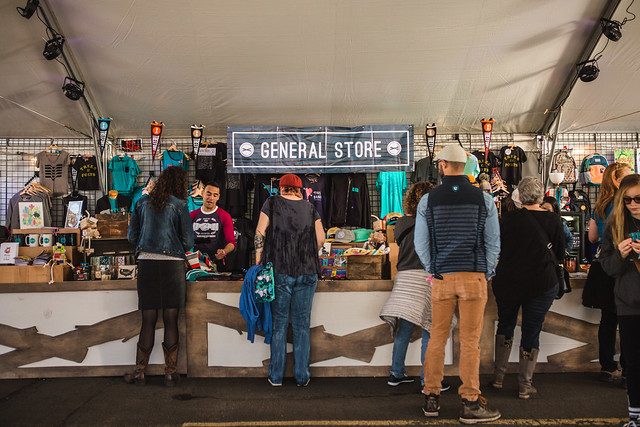
Treefort’s General Store and merch table
In no regard was that more true than with respect to sponsorships. While they exist, you really had to look and listen for them. Festival officials would acknowledge them in addressing the main stage, for instance, or they were hidden in the (pretty damn slick) app. But after the city itself, what made the festival so positively chill was how you noticed you weren’t being beaten over the head with any of it aside from its own, seamlessly integrated brand.
One more note about cohesiveness: there is no way it happens without the festival’s 900-plus volunteers. Let that number sink in. There are people staffing venue doors, pouring beer, selling merch, executing design, running hospitality, even personally sorting the recycling. That effort is why the whole production felt nearly flawless.

Belle Game at Treefunk side-stage event
* * *
A couple of us were walking southeast down W Grove St, on the southern edge of downtown Boise, when we experienced our first slice of the city’s heritage, the Basque Museum & Cultural Center. It’s a squat, restored brick home, originally constructed in 1864 by Cyrus and Mary Jacobs a year after Boise’s gold-rush-fueled founding. After learning all of this (thanks, historical sites), we walked the half-block further to a busy Basque Center, and stood under its towering ceilings and banners for country singer Courtney Marie Andrews.
In many ways, Treefort is sewn into Boise’s culture and infrastructure. Like Lincoln Calling or SXSW, it makes use of the city’s existing venues — the ones with specific purpose — but also the spaces that give ownership to the rest of the community.
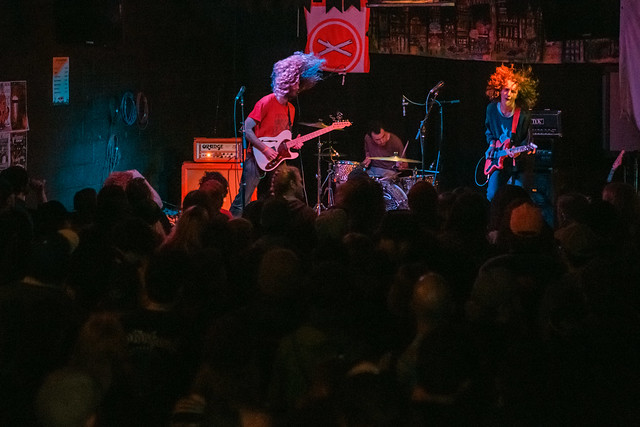
WEEED at The Shredder
After the main stage, the Boise Contemporary Theater was the first place we went Friday when we arrived. Traditionally a host for Boise’s performing arts programming, it made the perfect backdrop for low-key and ambient acts like Aldous Harding and Grouper. The latter headlined the space Friday night, juxtaposing sweeping, atmospheric drone with deep, nostalgic visuals. Beer in hand and butt in seat, it was the perfect environment in which to be blown away.
A few blocks northeast, the venue billed as the “Boise All-Ages Movement Project” was in fact Pollo Rey, a fast-casual Mexican restaurant near downtown’s 8th Street bar and restaurant corridor. As suggested, it was the hotspot for the younger crowd and played host to young indie rock acts like Wrinkles, Slow Caves and Elvis Depressedly. Curious about it in the run-up to the festival, we later found out the project itself is a nascent nonprofit organization looking for an actual dedicated space. For the weekend, its pop-up location worked well (also as a late-night snack destination).

Elvis Depressedly at Boise’s All Ages Movement Project (Pollo Rey)
* * *
At this point, you might be wondering what the music was like. One person’s view of a five-day, 20-venue, 400-plus-act music festival is so narrow, but here are a few quick thoughts on what I saw:
If had printed a schedule (the app organizes everything very neatly), Xenia Rubinos’ name would have worn the largest circle. I had seen her in Lincoln in 2014, when she opened for Man Man at Vega, but never on her own. Rubinos emerged onstage at the ultra-dim Linen Building just after 11 p.m. Friday night sporting a pair of sunglasses. She possessed an undeniable star-worthy attitude and matching soulful voice, showcased ahead of a trim yet muscular band. As it flipped prog rock bass riffs and shifting rhythms into liquid grooves, Rubinos bounced across the stage for nearly the entirety of her hour-long set. Payoff moment: “Just Like I” chugged like Rage Against Against the Machine and Rubinos lit its chorus on fire.
The main stage area was the social hub for many, but in terms of offering the most stunning performances, Treefort knocked it out. I mentioned Lizzo’s Saturday night romp above but it cannot be overstated how much of a party she made that block feel. The 500 square feet near the stage were absolutely packed. Her dancers were spectacular. Boise was one of the friendliest places I’ve been, and she managed to amplify that feeling with how confidently she danced, how blistering her (and DJ Sophia’s) delivery was and powerful the whole production felt.
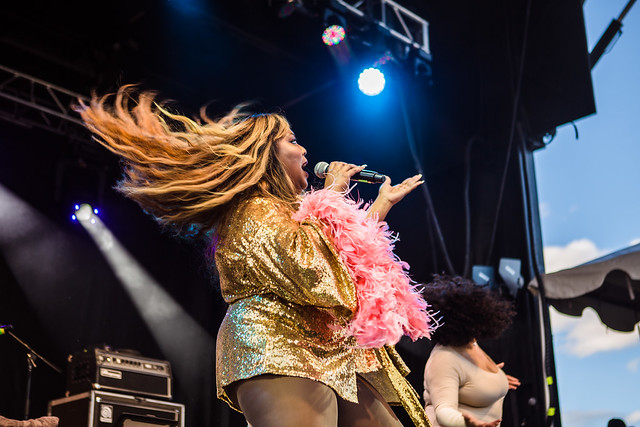
Lizzo, Festival Main Stage
I wandered away during Mac DeMarco’s ensuing set and ended up (as I often did) at the Boise All-Ages Movement Project, this time to find Missoula, Mont., indie rock band Wrinkles play to a younger, 40-person-strong crowd. They were definitely aware of the situation, cracking a couple good-natured jokes at the headliners’ expense and thanking everyone for being there. But this was a good example of the high top-to-bottom quality of acts throughout the festival — even with hundreds of bands — and the crowds they drew. Wrinkles was fun and dancey and had everyone moving — for what more can one ask?
Because of their sheer number, there were plenty of acts that I first heard in the preceding days. Or the same day (or not at all). At our home base, we plugged New York indie rock band The Dig into the speakers Saturday morning and saw them later that night at The Olympic. Their body language was striking, especially from bassist/vocalist Emile Mosseri. The tension and relief on songs like “Tired of Love” was palpable, as if to find fatigue and relief in the same moment. They brought what was left of musicians who had played the second-floor venue onto the stage for closing ballad “Simple Love.”
“Is anyone else awake?” Kate Tempest shouted from the main stage as the sky cleared Sunday afternoon. The crowd went silent as the music behind the English rapper dropped out, making way for her vicious assault on capitalism, religion and inequality. The electronic hooks bounced, but so poetic was her flow and lyricism it was easy to forget we weren’t at a slam reading. In the midst of rage, she created such nuanced, transportive imagery. If we weren’t in the winter of our discontent before, it was thrust upon us.
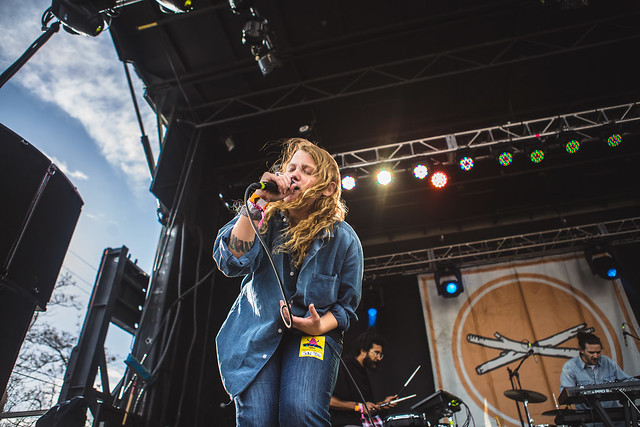
Kate Tempest, Festival mainstage
Last time Angel Olsen was in Boise, she said, there were maybe two people there. Many, many more convened at the main stage for her headlining set Sunday at a chilly 10 p.m. Olsen and company started with a one-two punch, the forlorn, western-tinged “Never Be Mine” and the anthemic “Shut Up, Kiss Me” from her breakout record My Woman. Every moment was enhanced: the guitars on “Give It Up” stung like the fresh burn of an ex-couple in close proximity. As she swore it was the last time during the delicate and dreamy “Intern,” it felt like she addressed you personally.
Halfway through the set, Olsen caught a snag on some technical issues, which weren’t immediately apparent until she noted them. It was her guitar, she said, breaking. She soldiered on with a new one, later saying “We’re just gonna keep trying. I don’t care if I forget the lyrics to every song I wrote.”
Perhaps the most dynamic performance, “Sister,” started chill, Olsen’s guitar glistening and drummer Joshua Jaeger’s drumsticks clacking on the snare drum rim. As she repeated the refrain “All my life I thought I’d change,” the chords grew bigger and the harmonies — bolstered by vocalist Heather McEntire’s Grace Slick-like boom — grew bolder until the two were yelling “ohh”s over guitarist Paul Sukeena’s billowing solo.
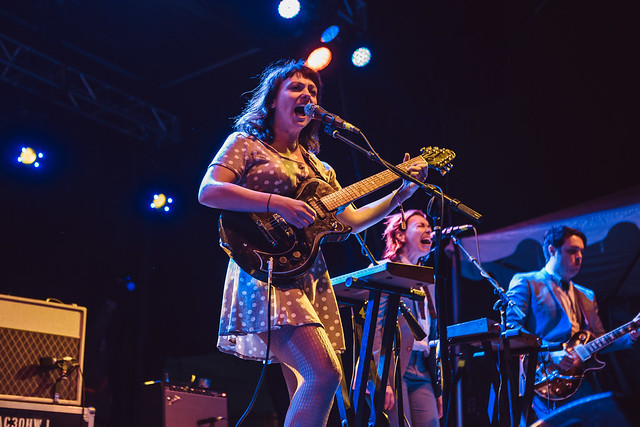
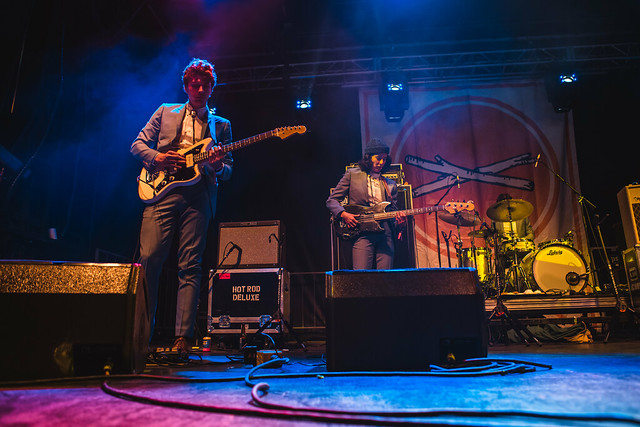
* * *
View more photos from Treefort Music Festival below:
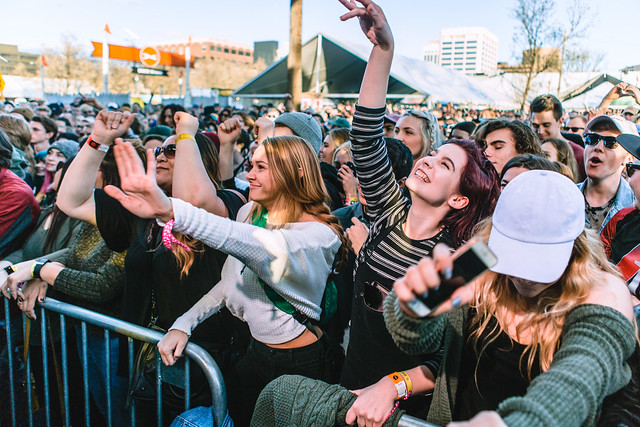
Sunday evening at the main stage

The Album Leaf, Festival Main Stage

Payette Brewing, Alefort

Emma Ruth Rundle, Mardi Gras
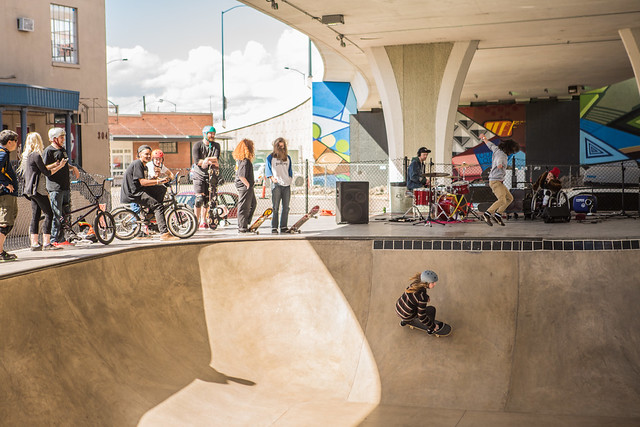
Skatefort
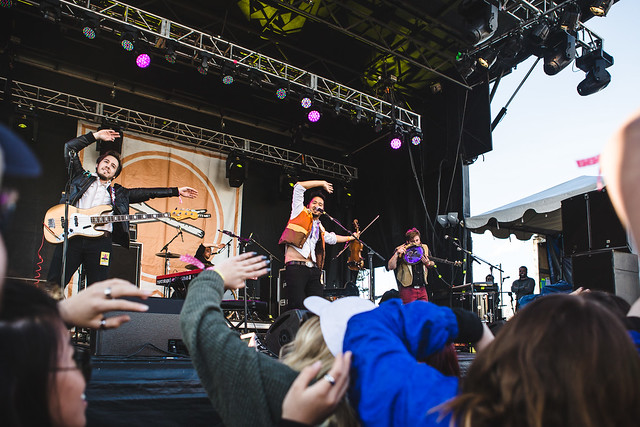
Kishi Bashi, Main Stage

Alvvays, El Korah Shrine

Light Thieves, Neurolux
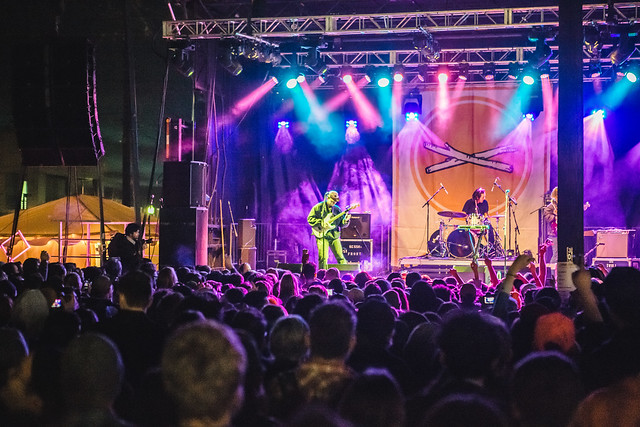
Mac DeMarco, Festival Main Stage




